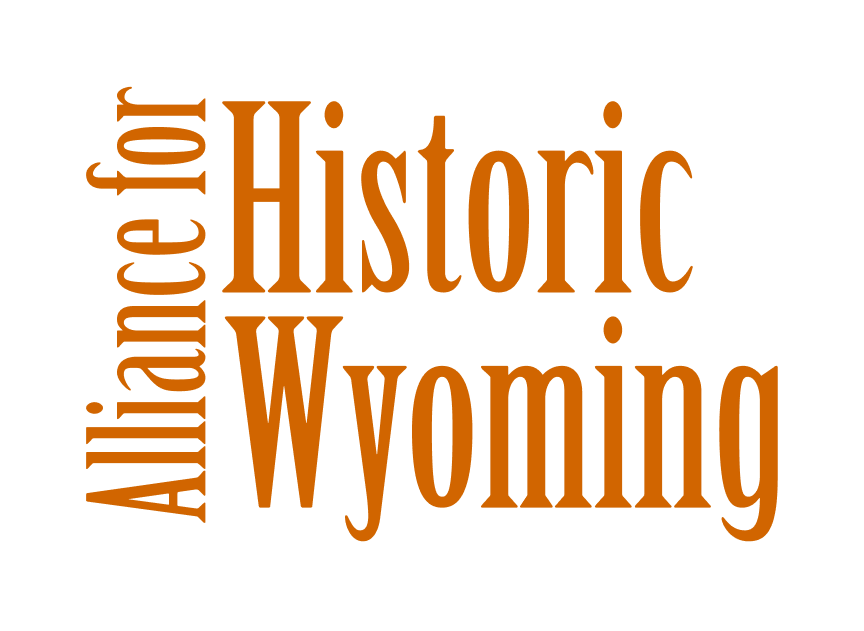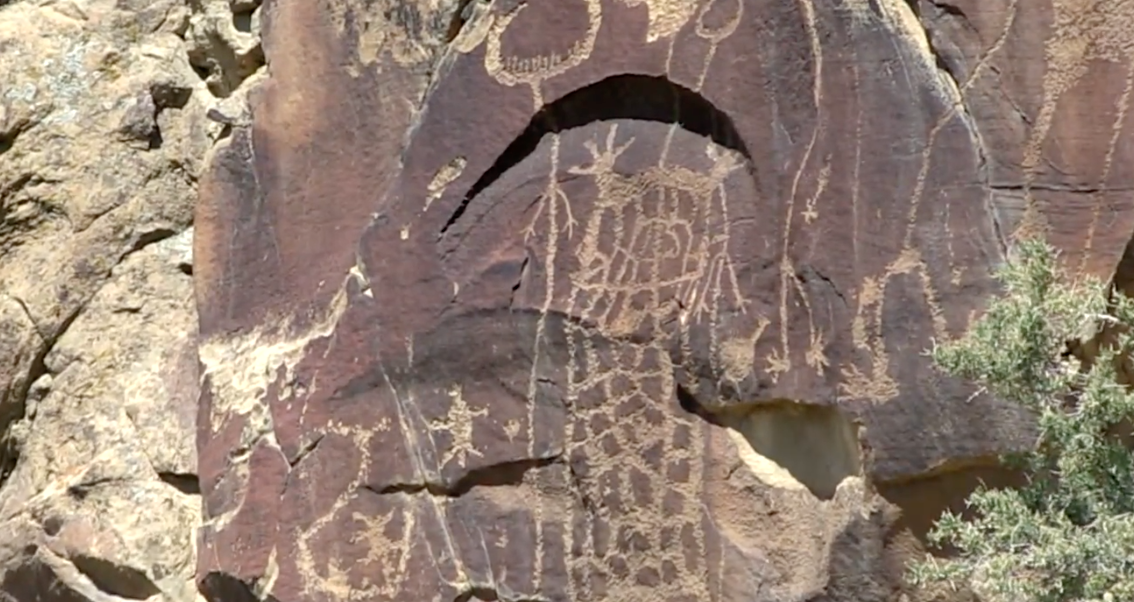(Article from SAH Archipedia written by Fred Chapman)
Located approximately 30 miles northwest of Thermopolis, the quarter-mile-long Legend Rock Petroglyph Site is one of the largest accessible rock art sites in the U.S. The site is located along the northern terraces and vertical sandstone cliffs of Cottonwood Creek in the southwestern Bighorn Basin. Legend Rock features 55 separate rock panels with several hundred petroglyphs (images pecked or carved into rock) and a few pictographs (drawn or painted on the rock). The site is probably best known for its large, elaborate, and highly abstract anthropomorphic petroglyphs. There are also depictions of humans as well as birds and animals such as elk, deer, bighorn sheep, horses, canids, and buffalo.
Evidence collected through scientific dating methods indicates that the site was used almost continuously by prehistoric Native Americans beginning 10,000 years ago. Archaeological excavations conducted in 1988 demonstrated that Legend Rock was probably not a permanent campsite, but was instead likely used by only a few individuals who engaged in personal rituals such as prayer and fasting (vision questing). The supernatural entities depicted on the sandstone cliffs may represent reproductions of what supplicants encountered in the altered states of consciousness that accompany these personal rituals. The site also features several historic era inscriptions, mostly names and dates associated with Euro-American visitors. The oldest is 1834, which by Wyoming standards is quite early.
Evidence suggests that most of the Legend Rock petroglyphs were made by the ancestors of today’s Numic-speaking Eastern Shoshone tribe. The Legend Rock petroglyphs closely resemble rock images found elsewhere in the Bighorn and nearby Wind River Basins. They are stylistically similar to petroglyphs found in the Great Basin, and particularly to rock art sites found in the Coso Range of southern California. All of these areas were once occupied by Numic-speaking tribes. Some of the images were incrementally modified over several thousand years, suggesting the unbroken expression of a persistent cultural tradition. Finally, although the site is known to both the Crow and Northern Arapaho, ethnographic interviews conducted with representatives of several tribes in the region demonstrate that the Shoshone feel most closely connected to Legend Rock.



